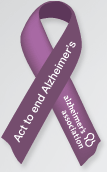
57% of homeless families identified domestic violence as a primary cause of homelessness. (The United States Conference of Mayors, A Status Report on Hunger and Homelessness in America's Cities: 1999, December 1999, p. 39.)
That is just one of the many statistics about how domestic violence affects communities, not just the abuser and victim. Wear a purple ribbon to show support for victims of domestic abuse this month. Read the article below and donate to or volunteer for a crisis center in your community. As a former crisis-line and shelter worker I can say that education about abuse is important to both the victim and abuser, not to mention the public. Please use this month to erase some of the myths that exist in your own mind concerning violence in the home.
*******************
Domestic Violence and Women
By Kadence Buchanan
Every single day a number of health care professionals have to encounter an incident of an abused victim turning to them to request help. But even of you are not a trained professional you should be familiar with what domestic violence is and what it can do to victims. Then you will be better prepared to react correctly in case you encounter such an unfortunate incident. Helping the victim regain a sense of control over his or her life should not be your responsibility if you are not a trained professional, but being informed can sometimes save a victim from keeping everything within and self-destruct.
Domestic violence is characterized as a pattern of coercive behaviors that may include repeated battering and injury, psychological abuse, sexual assault, progressive social isolation, deprivation and intimidation. Someone who is or was involved in an intimate relationship, with the victim, might perpetrate these behaviors. According to official data from law enforcement units and medical institutions, gender plays an important role in dynamics of abuse. Over 85 percent of reported victims of domestic violence are women and most perpetrators are men. Moreover, domestic violence is the leading cause of injury to women of all ages and the leading cause of injury to pregnant women and ladies between 18 and 44 years of age.
On the other hand, domestic violence is also known as "partner violence or spouse abuse" since experts recognize that also men may be abused in intimate relationships. In addition, many of today's societies report domestic violence incidents between gay or lesbian partners, since this type of intimidating behavior is not a characteristic of a specific sexual orientation. Physical assault, sexual abuse, threats against person, creating stress and psychological damage to children or loved ones, destruction of home or personal property, are some of the most common cases reported as examples of domestic violence incidents.
Unfortunately, although extremely common, domestic violence is considered an extremely sensitive subject that victims do not easily report and thus it remains confined inside the particular territory of a family's neighborhood or even walls. Some of the most common domestic violence myths include that it is a behavior pattern indicative of particular economic and social groups; it is a marital problem; victims will never speak of what they are experiencing; it is associated with alcohol or drug abuse; and that violence can be handed down from one generation to the next.
In fact, research indicates that violence may be a learned behavior, particularly from observation, however all men who are violent do not have histories of violence in childhood. Very interesting is the fact that unmarried partners and those who are separated or divorced have higher rates of abuse than those who are married. Additionally, rate of domestic violence vary little between economic and/or cultural groups. Finally, while studies have shown that alcohol and/or drug addiction and violence frequently coexist, they are not resulting from each other and that violent behavior will not end unless professional treatment and adequate interventions address both problems; the substance abuse and the violent behavior.
Kadence Buchanan writes articles on many topics including Women's Health, Cooking, and Women
Article Source: http://EzineArticles.com/?expert=Kadence_Buchanan
*******************
New TreeHuggerz Articles
Eating Can Be An Adventure - Keep It Interesting, Simple, Healthy and Fun
Aromatherapy Travel Insurance - Essential Oils For Your Journeys
TreeHuggerz Freebies
Hope For Healing.Org has free brochures available for download in PDF format. This organization is Christian-based with many resources, both on and offline, for victims of assault.
National Domestic Violence 24/7 Hotline:
1-800-799-SAFE (7233)
1-800-787-3224 (TTY)
Hotline advocates are available to provide crisis intervention, safety planning, information and referrals to agencies in all 50 states, Puerto Rico and the U.S. Virgin Islands. Assistance is available in English and Spanish with access to more than 140 languages through interpreter services.
Feminist Internet Gateway: Domestic Violence Resources
This is the most comprehensive online listing I've come across.










No comments:
Post a Comment